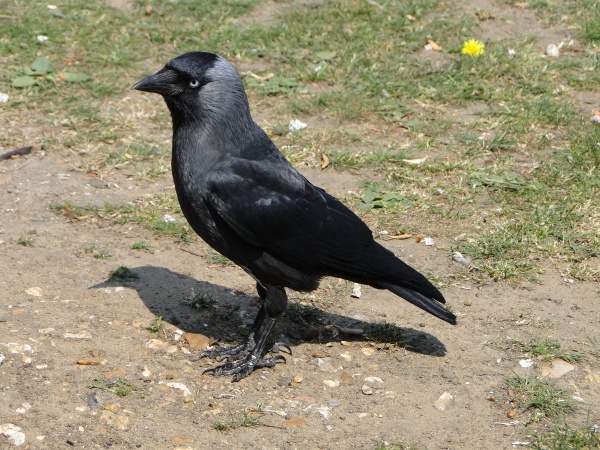Facts About Western jackdaw
The western jackdaw, also known as the Eurasian or European jackdaw, is a small yet striking member of the crow family. You can find it across Europe, western Asia, and North Africa. While many of these birds remain in their habitats year-round, some migrate south during the winter months. There are four different subspecies, primarily distinguished by variations in plumage color. The renowned scientist Carolus Linnaeus originally named it Corvus monedula. The term "jackdaw" derives from "jack" meaning small, and "daw" an old English word for the bird.
These birds are easy to identify. They measure about 34–39 centimeters in length and have black feathers with a distinctive greyish nape and striking pale-grey eyes. Western jackdaws are social creatures, frequently seen in groups, and are known for their intelligence and vocal nature. They adapt to a variety of environments and have an eclectic diet, consuming everything from plants and invertebrates to urban scraps. They form lifelong pairs, building simple nests where the female lays around five pale blue eggs.
Western jackdaws are renowned for their social behaviors and diverse vocalizations. They are often observed in flocks, displaying their social hierarchy. They even share food within their groups actively. Regarding breeding, these birds nest in colonies, with pairs jointly defending their nests. Their diet includes insects, small rodents, carrion, and plant matter.
These birds are also steeped in folklore and cultural beliefs. In some cultures, seeing a jackdaw may be interpreted as a sign of impending rain, death, or the arrival of a new person. They have been featured in ancient tales, modern literature, and art.
Historically, western jackdaws have been considered pests because they sometimes damage crops. Although they have been hunted, they haven't faced as much persecution as some other crow species. They have also been linked to disease outbreaks and parasites. Observing their behaviors, such as nest-building, foraging, and social interactions, makes them a fascinating subject for bird watchers and researchers alike.

 Albania
Albania